Last Updated on June 4, 2023 by ellen
Have you considered getting a seahorse for your tank? Check out the easiest seahorse to keep out of all the different species.
Posts may be sponsored. This post contains affiliate links, which means I will make a commission at no extra cost to you should you click through and make a purchase. As an Amazon Associate I earn from qualifying purchases.
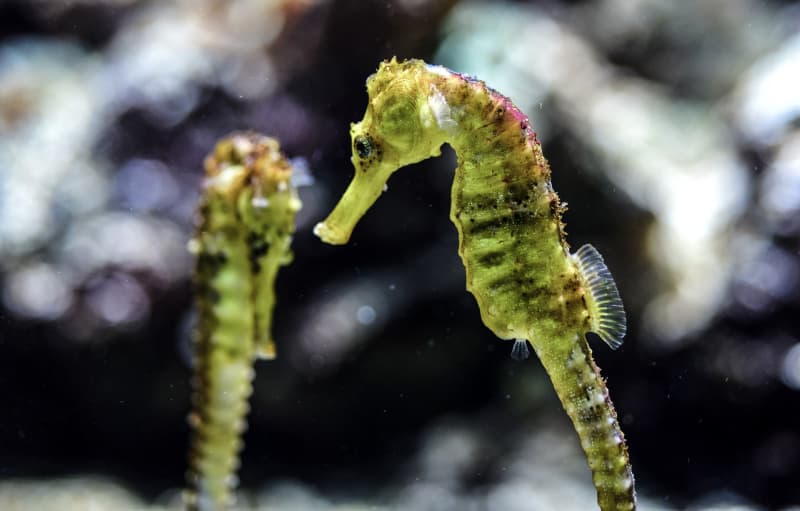
Table of Contents
Easiest Seahorse to Keep
There are many different species of seahorses, and some are definitely easier to keep than others. If you’re looking for a seahorse that is relatively easy to care for, the Kuda seahorse (Hippocampus kuda) is a good option. These seahorses are relatively hardy and can adapt to a wide range of aquarium conditions.
One of the biggest challenges in keeping seahorses is providing them with enough food. Kuda seahorses are opportunistic feeders and will eat a variety of small live foods, including mysid shrimp, brine shrimp, and copepods.
They should be fed several times per day. Get this food. It really is the best food for sea horse pets I’ve found.
Another consideration when choosing a seahorse is compatibility with other tankmates. Kuda seahorses are generally peaceful and can be kept with a variety of other fish, as long as they are not too large or aggressive. Good tankmates for kuda seahorses include dwarf angelfish, clownfish, and gobies.
If you’re looking for an easy-to-care-for seahorse, the kuda seahorse is a good option. These hardy fresh water sea horse fish are relatively easy to feed and can be kept with a variety of peaceful tankmates.
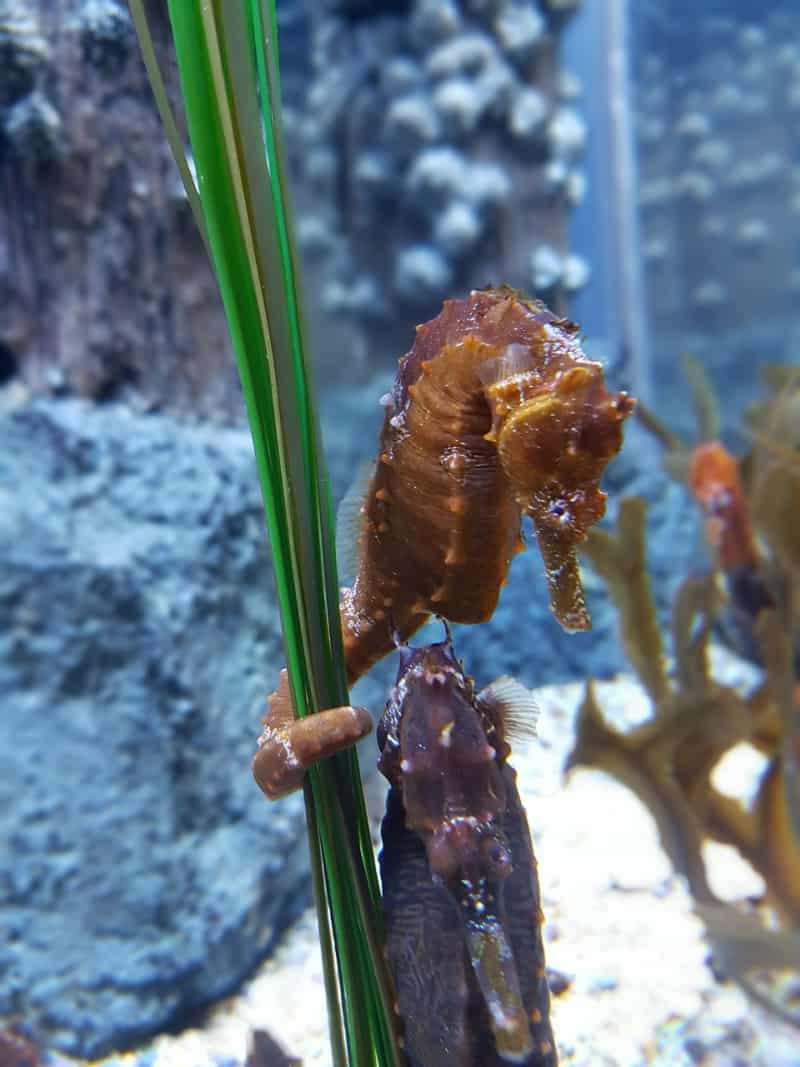
What are seahorse keepers?
Seahorse keepers are people who have a particular interest in keeping and caring for seahorses. This can be either in captivity, such as in an aquarium or in the wild. Many seahorse keepers start out with a general interest in fishkeeping and then develop a specific interest in these unique creatures.
Some seahorse keepers keep their fish in home aquariums, while others may work at public aquariums or marine parks. Some seahorse experts also work in the field of research, studying these animals in their natural habitat.
How much do seahorses cost?
Depending on what you want, the cost can rage from $45 to $250.
No matter where they are kept, all seahorses need proper care and attention to thrive. This includes a clean and well-maintained tank, a healthy diet, and regular vet check-ups. Seahorse keepers must also be aware of the potential hazards posed by other aquarium inhabitants, such as aggressive fish or invertebrates that might attack or eat seahorses.
Seahorses are unique and fascinating creatures that make interesting and rewarding pets. If you’re considering adding one to your aquarium, do your research to choose the right species and be prepared to provide proper care. With a little effort, you can enjoy these amazing animals for many years to come.
Here’s some information seahorse keepers should keep in mind.
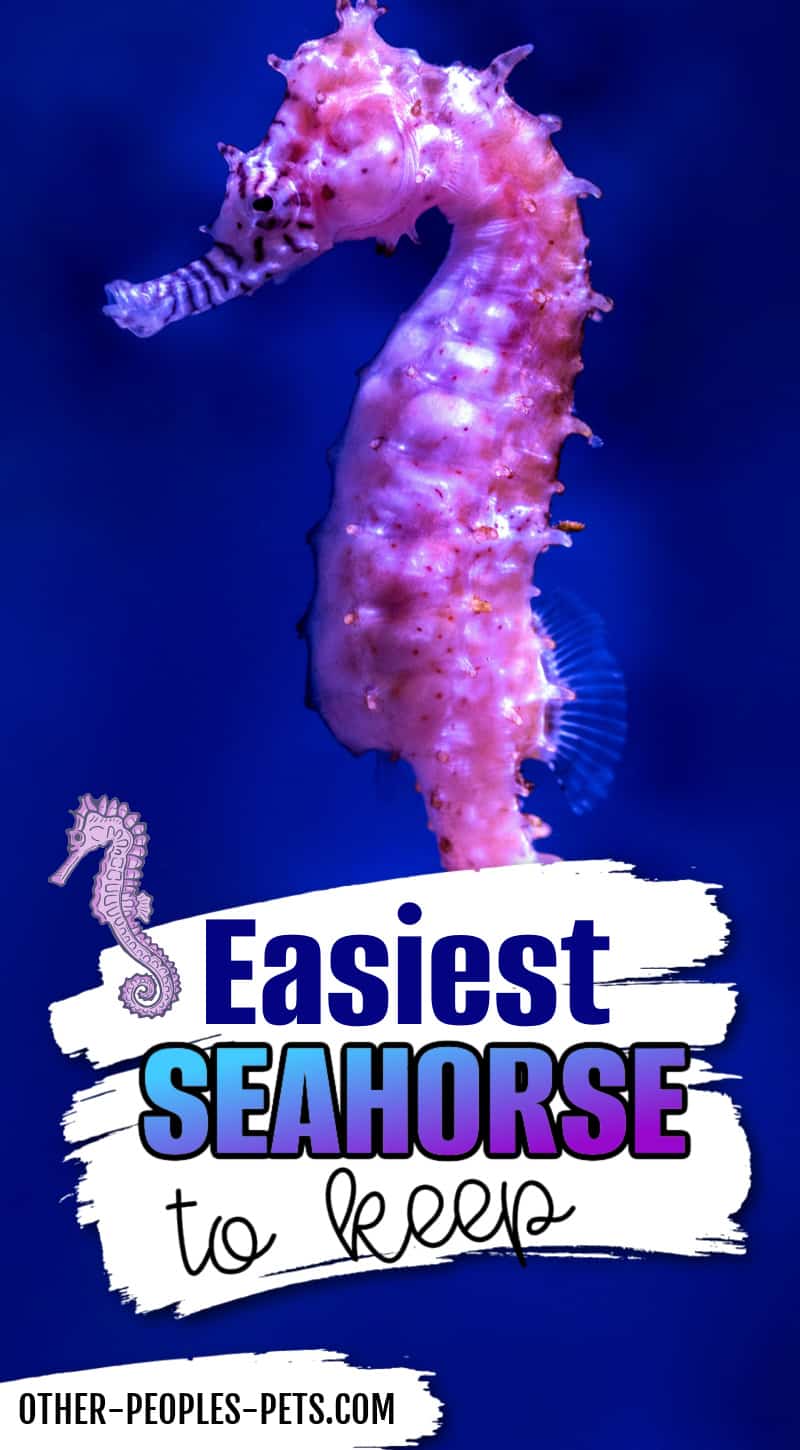
Are seahorses good for beginners?
Yes, most seahorses can be good for beginners as they are relatively easy to care for. The kuda seahorse is a particularly good option for beginners as they are hardy and adaptable.
One of the biggest challenges in keeping seahorses is providing them with enough food, so make sure you are prepared to feed them several times per day.
Seahorses are also relatively peaceful, so they can be kept with a variety of other fish, as long as they are not too large or aggressive.
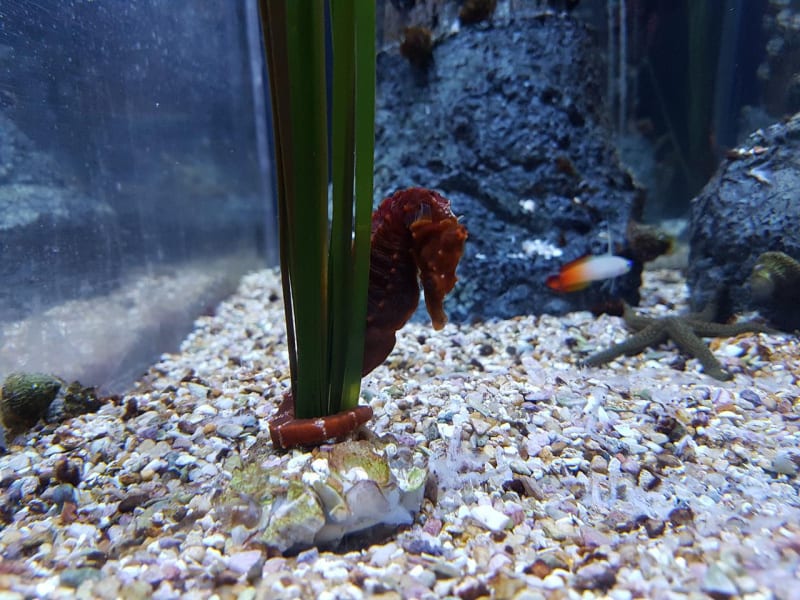
Are sea dragons the same as seahorses?
No, sea dragons are not the same as seahorses. Sea dragons are actually a type of leafy sea dragon, which is a relative of the seahorse.
Leafy sea dragons are found in southern Australia and can grow up to 18 inches in length. Seahorses are found in tropical and temperate waters around the world and range in size from 2 to 14 inches.
Dwarf seahorse tank mates
I would include one or two of the dwarf Gulf pipefish in my tank. These are the best choice for a freshwater seahorse pet. I recommend this dwarf seahorse kit.
What is a reef tank?
A reef tank is a marine aquarium that features live coral and other invertebrates. Reef tanks are usually populated with a variety of brightly colored fish, such as clownfish and angelfish.
Reef tanks require special care, as the corals and other invertebrates are very sensitive to changes in water quality. The tank must be carefully monitored and maintained to ensure the health of the inhabitants.
Reef tanks can be challenging to set up and care for, but they are incredibly rewarding. The wide variety of colors and shapes of the corals and many species of fish make for a beautiful and fascinating display.
If you’re interested in setting up a reef tank, do your research to make sure you are prepared for the challenge. Once you have a well-established reef tank, you’ll be able to enjoy the beauty and wonder of the underwater world in your own home.

What other species can I add to my reef tank?
In addition to soft corals, there are a variety of other invertebrates that can be added to your reef tank. These include anemones, clams, crabs, shrimp, and starfish.
Adding a variety of invertebrates to your reef tank can provide hiding places for your fish and help maintain water quality. However, it’s important to do your research before adding any new inhabitants, as some invertebrates can be aggressive or damaging to coral.
Adding a variety of fish to your reef tank can also provide interest and color. Some common reef fish include clownfish, damselfish, tangs, and wrasses. These will all do well in seahorse aquariums.
Captive or wild caught?
Most seahorses available for purchase are captive-bred. Captive-bred seahorses are generally hardier and easier to care for than wild-caught seahorses. If you’re looking for a seahorse that is easy to care for, choose a captive-bred variety.
When buying a seahorse, make sure to purchase from a reputable dealer. Ask questions about the seahorse’s background and health history to make sure you are getting a healthy animal.
It is also important to provide a suitable habitat for your seahorse. Seahorses need plenty of hiding places and a place to perch or attach themselves. They should also have access to slow-moving water.
Aquariums with live rock and plenty of vegetation are ideal for seahorses. Live rock provides hiding places and a source of food, while vegetation helps to keep the water quality clean and stable.
Delicate wild caught seahorses are not good for beginners. It’s best to start with captive bred specimens.

Water temperature for seahorses
Seahorses are tropical animals and need warm water to thrive. The ideal water temperature for seahorses is 76-82 degrees Fahrenheit (24-28 degrees Celsius).
If your home is not naturally warm enough to maintain these temperatures, you will need to use an aquarium heater. It is very important to use a quality heater that can maintain a stable temperature.
Seahorses are also very sensitive to changes in water quality, so the aquarium must be carefully maintained for a stable environment. Regular water changes and close monitoring of water parameters are essential.
Even hardy species of seahorses need warmer temperatures to be happy.

How to start a seahorse aquarium
If you’re interested in keeping seahorses, it’s important to do your research to make sure you are prepared for the challenge. Seahorses are delicate creatures and require special care.
The first step in setting up an aquarium is to choose the right size tank. Seahorses need plenty of room to swim, so a larger tank is better. The next step is to choose the right filtration system. Seahorses are very sensitive to changes in water quality, so a good filtration system is essential.
After you have the tank and filtration system set up, you’ll need to add live sand and live rock to the seahorse tank. These will provide a natural habitat for the seahorses and help to filter the water.
They will also enjoy stony corals or soft corals. You can buy a whole seahorse setup right here to make getting started a bit easier.
Once the tank is set up, you’ll need to add some seahorses! When choosing seahorses, selecting healthy specimens from a reputable dealer is important. Always look for captive-bred seahorses for the best results.
After you’ve added your seahorses to the tank, you’ll need to provide them with a good diet. Seahorses eat small live foods, such as mysid shrimp, brine shrimp, and copepods. They should be fed several times per day.
Once you have your seahorse aquarium set up and running smoothly, you’ll be able to enjoy the beauty and wonder of these amazing creatures.
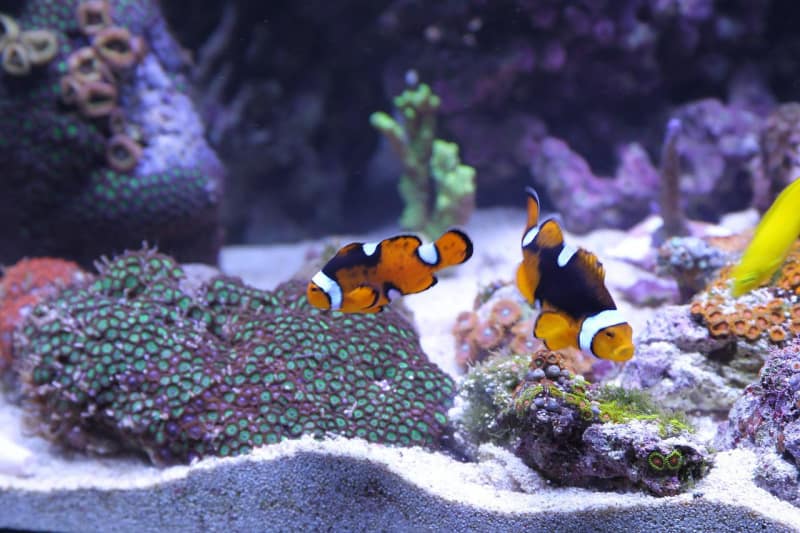
Best tank size for captive bred seahorses
The ideal tank for captive-bred seahorses is at least 30 gallons. A larger tank is even better.
Seahorses are very active swimmers and need plenty of room to swim. They also need a lot of hiding places and a place to perch or attach themselves.
Aquariums with live rock and plenty of vegetation are ideal for seahorses. Live rock provides hiding places and a source of food, while vegetation helps to keep the water quality clean and stable.
Are dwarf seahorses hard to keep?
They are not particularly difficult to keep, but they require specialized care. And dwarf seahorses are very sensitive to changes in water quality, so a good filtration system is essential.
Dwarf seahorses also need plenty of live food to eat. They should be fed several times daily with small live foods, such as mysid shrimp, brine shrimp, and copepods.
With proper care, dwarf seahorses can be a rewarding addition to your aquarium. These beautiful little creatures are a joy to watch and make a fascinating addition to your underwater world.
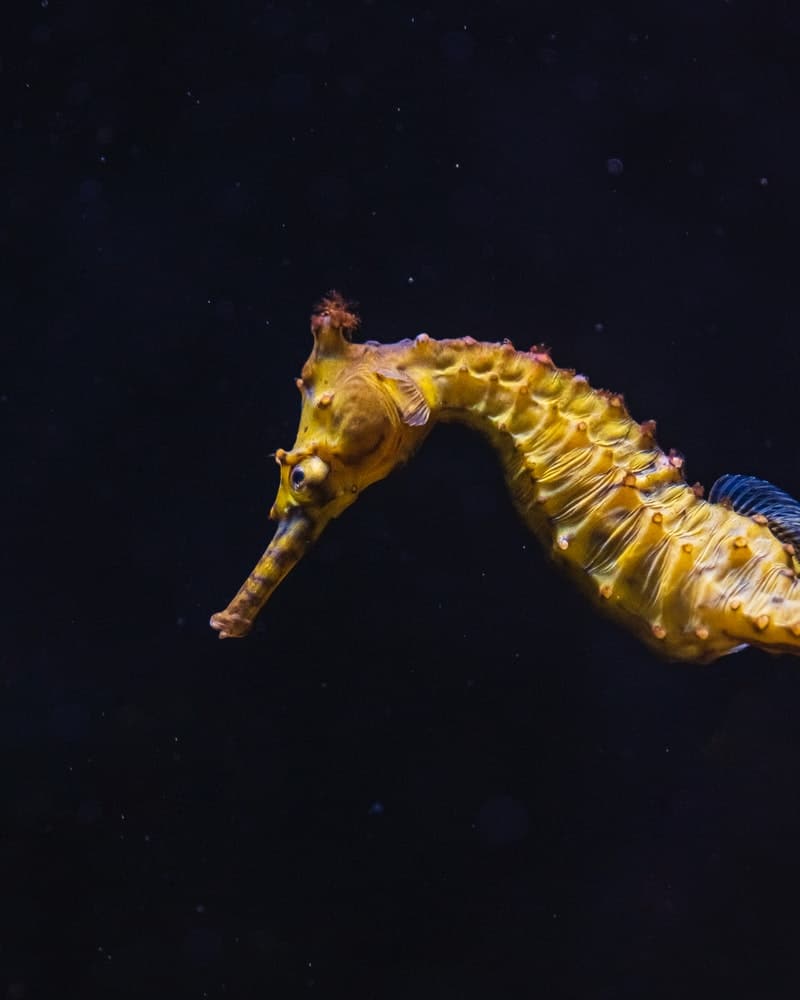
Top 5 seahorse species to keep as pets
You have many different species to choose from if you are looking for a seahorse to keep as a pet. Some seahorses are easier to care for than others, and some are more compatible with other tankmates. Here is a list of the top 5 seahorses to keep as pets:
1. Kuda seahorse (Hippocampus kuda) – These are relatively hardy and can adapt to a wide range of aquarium conditions. They are also opportunistic feeders, so they will eat a variety of small live foods.
2. Yellow seahorse (Hippocampus reidi) – Yellow seahorses are very peaceful and can be kept with a variety of other marine life. They are also easy to feed, as they will eat various small live foods. I love the bright yellow color.
3. Dwarf seahorse (Hippocampus zosterae) – These seahorses are very small, so they need to be kept in an aquarium with other peaceful fish that are small enough not to eat them. Dwarf seahorses are also easy to feed, as they will eat a variety of small live foods.
4. Pygmy seahorse (Hippocampus bargibanti) – These seahorses are very small, so they need to be kept in an aquarium with other peaceful fish that are small enough not to eat them. Pygmy seahorses are also easy to feed, as they will eat a variety of small live foods.
5. Tiger tail seahorse (Hippocampus comes) – These seahorses are relatively hardy and can adapt to many aquarium conditions. They are also opportunistic feeders, so they will eat various small live foods.
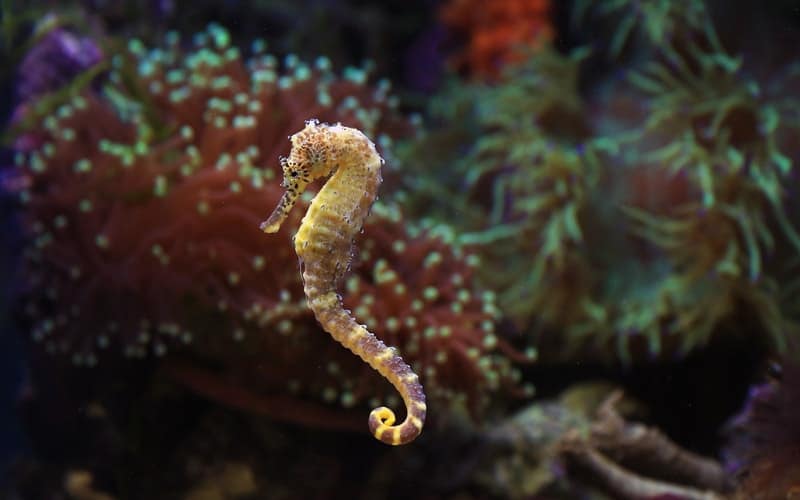
Hardiest captive bred seahorses
Some seahorses are hardier than others and can better withstand changes in water conditions. If you are looking for a seahorse that is more tolerant of captive conditions, here are some good options:
1. Kuda seahorse (Hippocampus kuda) – These are relatively hardy and can adapt to many aquarium conditions.
2. Yellow seahorse (Hippocampus reidi) – Yellow seahorses are very peaceful and can be kept with various other fish.
3. Dwarf seahorse (Hippocampus zosterae) – These seahorses are very small, so they need to be kept in an aquarium with other peaceful fish that are small enough not to eat them.
4. Pygmy seahorse (Hippocampus bargibanti) – These seahorses are very small, so they need to be kept in an aquarium with other peaceful fish that are small enough not to eat them.
5. Tiger tail seahorse (Hippocampus comes) – These seahorses are relatively hardy and can adapt to many aquarium conditions.
Where can I buy seahorses?
If you are looking to buy seahorses, there are many different places you can look for seahorses for sale. The best place to buy seahorses will probably be a pet store. Here are some options:
1. Local fish store – This is a good option if you want to see the seahorses in person before you buy them. However, not all local fish stores will carry seahorses.
2. Online retailer – This is a good option if you want to buy a seahorse pet from the comfort of your own home. However, make sure you buy from a reputable retailer to ensure you get healthy seahorses.
3. Aquarium show – This is a good option if you want to see the seahorses in person before you buy them. Aquarium shows typically have a wide variety of seahorses for sale.
4. Breeder – This is a good option if you want to buy seahorses from a reputable source. However, breeders can be hard to find.
What do seahorses eat?
Seahorses are carnivores and primarily eat small live foods, such as baby brine shrimp, mysis shrimp, and copepods. They also require a constant supply of food, so they should be fed 2-3 times per day.
Be sure you understand their feeding habits before becoming a seahorse keeper. Here’s everything you need to know in this book.
Can they eat frozen food?
Seahorses can eat frozen food, but they should only be fed frozen food as a supplement to their diet. Frozen food does not contain the same nutrients and moisture content as live food, so it should not be used as a primary food source.
How do I set up a seahorse aquarium?
Seahorses need a specialized aquarium setup due to their unique needs. Here are some tips for setting up an aquarium:
1. The aquarium should be at least 20 gallons in size.
2. The salt water should be well-filtered and of good quality.
3. The water should have a low level of dissolved oxygen.
4. The water should have a low level of ammonia and nitrites.
5. Live rock and/or live plants can provide hiding places for the seahorses.
6. A protein skimmer is recommended to help remove waste from the water.
7. Seahorses should be kept in pairs or groups.
8. Only peaceful fish should be kept with seahorses.
9. Avoid using copper-based medications in the aquarium, as they can be toxic to seahorses.
10. Use caution when adding new fish to the aquarium, as they may carry diseases that can harm seahorses. Always quarantine new aquarium life.
Do seahorses mate for life?
No, seahorses do not mate for life. They typically mate for a season in the wild and then go their separate ways. In captivity, they can be induced to mate year-round.
What is the lifespan of a seahorse?
In the wild, seahorses have an average lifespan of 3-5 years. In captivity, most seahorse species can live for 10 years or more with proper care.
You can find a seahorse from a local fish store that will live for many years if properly cared for.
What is the largest seahorse species?
So, the largest species is the big-bellied seahorse (Hippocampus abdominalis), which can grow to be up to 14 inches long. The Brazilian seahorse is one of the largest species but not quite as large.
Large seahorses won’t work for most beginners. Larger species will be too large for an aquarium fish tank. It might be easier to start with a dwarf seahorse from your local fish store.
I hope you enjoy raising seahorses!
More articles
Finally, you may enjoy these articles.
- Good fish for kids
- How to feed betta fish while on vacation
- Betta fish fish food
- Can you have a pet snail
- Pet snail care
- How to make a snail terrarium
- Best pets to keep in a tank
- What to do if you find a baby blackbird

Ellen runs a small pet sitting business in southern Vermont. She has experience with a variety of small animals, dogs and cats. She has also cared for ducks, chickens and rabbits. Combined, she has over 20 years of experience in pet care and pet sitting.

